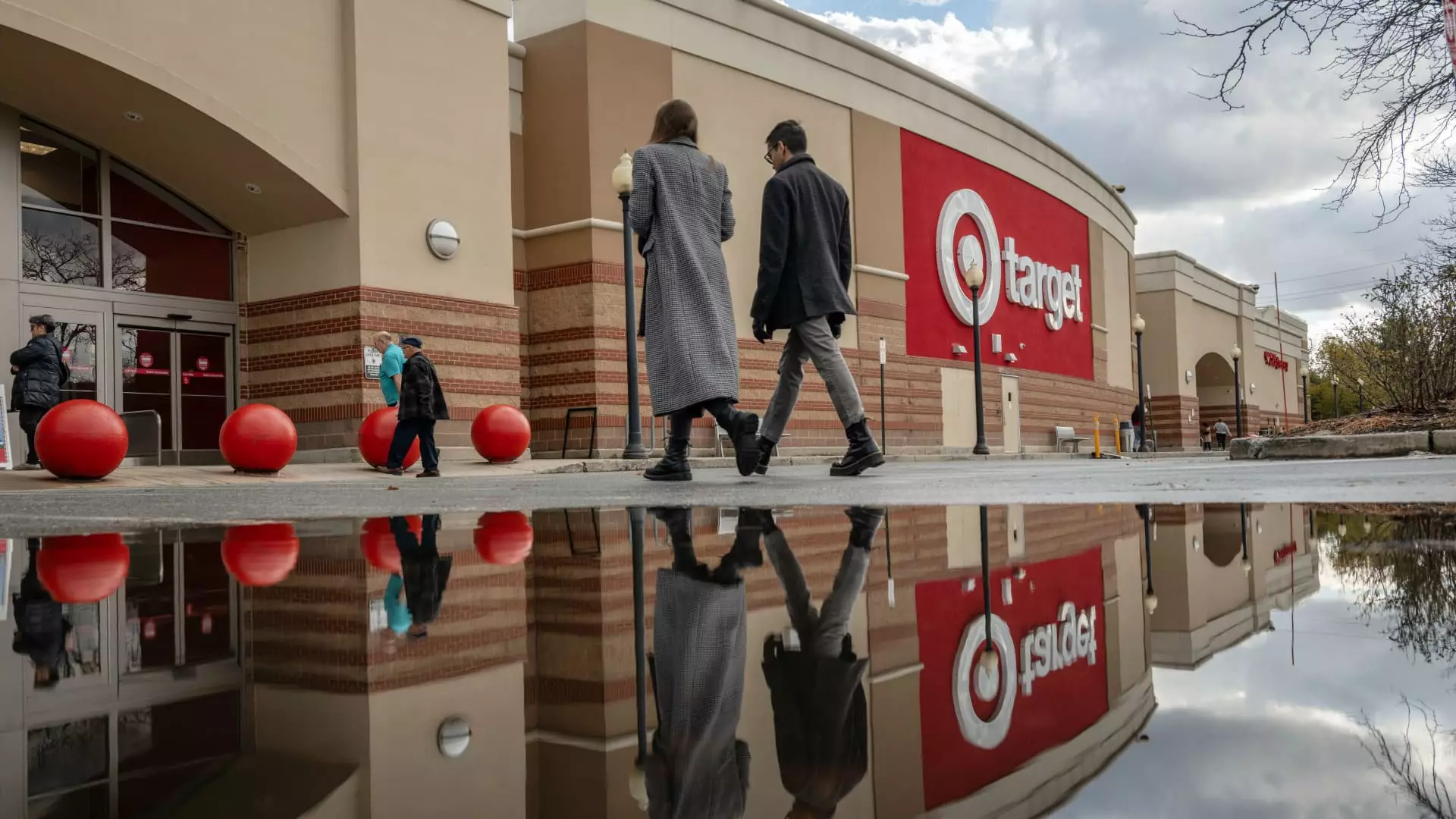The approaching holiday season signifies a crucial selling period for retailers aiming to capture consumer interest and drive sales. As shoppers gear up to indulge in party dresses, festive gifts, and seasonal makeup, not all retailers are basking in the glow of increased spending. Recent third-quarter earnings reports reveal a chasm between brands performing well and those struggling to maintain their footing in a competitive market. While some retail giants like Walmart report robust sales, others such as Target and Kohl’s face disheartening results despite marketing efforts aimed at drawing in buyers.
Retailers’ financial reports from recent weeks illustrate a stark divergence in holiday performance. Retail brands like Dick’s Sporting Goods and Abercrombie & Fitch showed impressive growth, bolstered by early engagement with holiday assortments. In contrast, retailers such as Target and Kohl’s delivered disappointing performance indicators, with their early holiday promotions not translating into substantial gains. This disparity in earnings highlights a fundamental challenge for many retailers as they grapple with changing consumer behaviors influenced by prolonged inflationary pressures.
Neil Saunders from GlobalData Retail highlights an important trend: consumers are adopting a more selective approach towards spending. As inflation forces shoppers to reconsider discretionary purchases, many are curating their lists more meticulously, choosing to purchase fewer items without compromising on quality. This emerging mindset fosters a critical question for retailers: What strategies are in place to capture those selective shoppers and mitigate the risk of being relegated to the sidelines?
Despite signs that inflation may be easing, the two-year streak of rising prices has led to significant shifts in consumer sentiment. The holiday spending forecast from the National Retail Federation anticipates a modest increase in sales, reflecting caution among shoppers. As consumers remain constrained by rising costs related to necessities like groceries and housing, retailers must find compelling value propositions to keep customers engaged.
The NRF predicts holiday sales growth in the range of 2.5% to 3.5%, a noticeable deceleration from previous years. Retail leaders must navigate a more challenging landscape as consumers look to cut back on what they perceive as unnecessary purchases. This reluctance to spend on novelty items underscores the necessity for retailers to position their inventories strategically—offering products that are not only appealing but also practical and relevant to the current consumer mindset.
As some retailers struggle, others have adapted by refining their approaches to inventory and marketing. For example, Abercrombie’s Chief Operating Officer expressed excitement over early positive responses to their holiday offerings, positioning them well for anticipated sales growth during peak shopping periods. On the other hand, Target, despite a lackluster forecast, has recently adopted innovative tactics such as introducing exclusive merchandise from popular entertainment franchises and significant markdowns across various categories to attract reluctant shoppers.
However, not all retailers are positioned to make gains. Target and Kohl’s face unique challenges because of their focus on discretionary items over essentials. As consumers lean toward “experiential” gifts or practical items, retailers must revamp their offerings to align with these shifting preferences. The absence of novelty offerings that resonate meaningfully with shoppers can lead to disappointing results for brands unable to adapt.
In an environment rife with uncertainty, retailers must brace for the impact of both anticipated and unanticipated challenges. Marshaling insights from market analysts, the consensus delineates that value—both in terms of price and perceived quality—will be essential. As pressure mounts for consistent sales performance, retailers might also anticipate the temptation to attribute sluggish outcomes to external factors, like supply chain disruptions or adverse weather conditions.
As retailers prepare for the holiday shopping season, the ability to forecast consumer behavior accurately and respond to the evolving landscape will dictate their success or struggle in the coming months. Ultimately, the holiday season will test the agility of retailers in drawing customers and determining who can successfully navigate the complexities of a demanding market becoming increasingly marked by selectivity and value-driven purchases.
As we approach the pivotal holiday sales period, the divide between successful and struggling retailers will likely widen if strategies are not effectively aligned with consumer priorities. For brands seeking to enhance their appeal amid cautious spending, the focus must shift towards creating compelling and relevant offerings that resonate with today’s discerning shopper.

